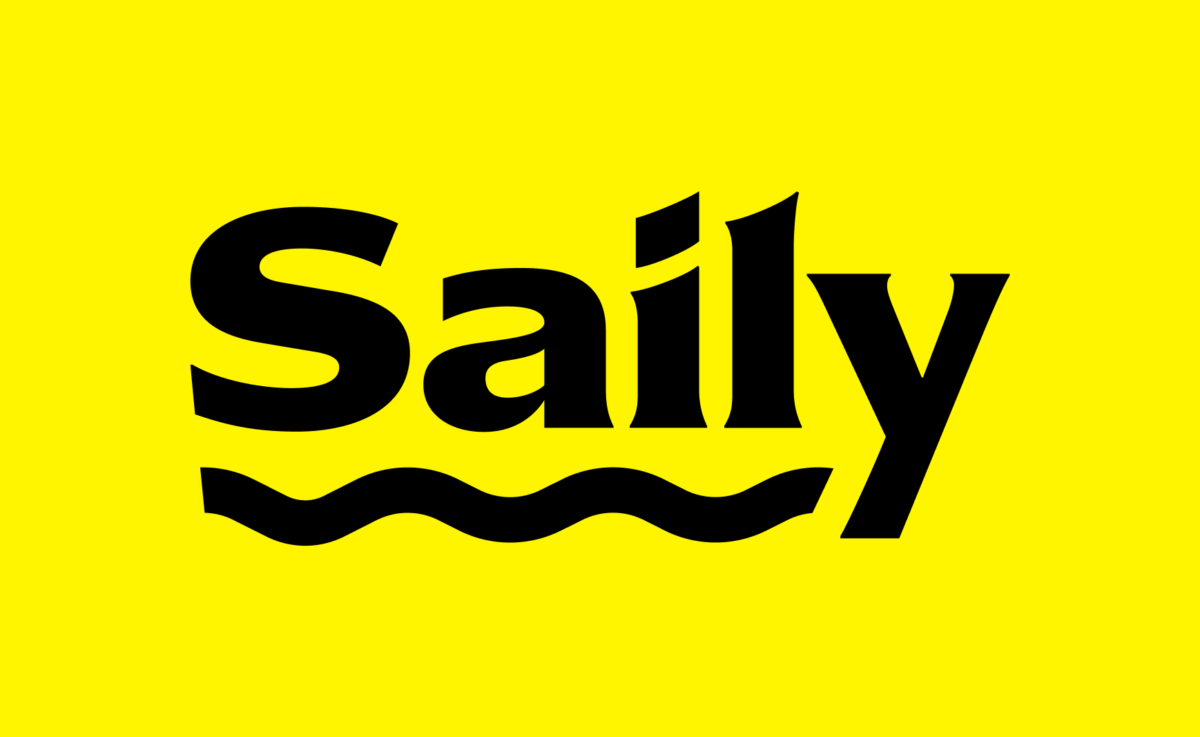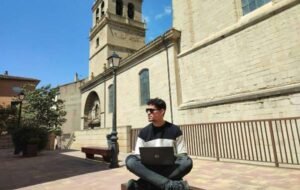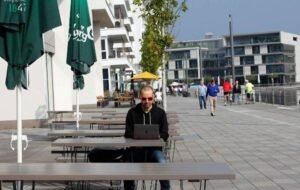
Digital Nomads – 5 Best Places in Italy
The 5 Best Places for Digital Nomads in Italy 2025
If you’re a digital nomad looking for your next base or even considering the nomadic lifestyle then Italy should be one to think about. The country offers amazing culture, cuisine, and connectivity. In this guide, you’ll discover the five best places for digital nomads in Italy that are perfect for that work/life balance.
We’re going to cover details on Italy’s top digital nomad spots, including internet connectivity, cost of living, and expat communities. No matter if you’re looking for affordable living in Italy or just a great WiFi speed, this guide has you covered. Let’s jump into the specifics to help you choose your ideal Italian destination.

I have been travelling now for nearly three years. I left my 9-5 job in the UK and have never looked back. The one thing I would always advise anybody considering a nomad lifestyle is to just go for it! It will change you for the better. Music is my passion and I love to attend concerts of any variety but I do have a sweet spot for rock music.
Affiliate Disclosure: Some of the links on our site are affiliate links, meaning, at no additional cost to you, we may earn a commission if you click through and make a purchase. This helps us to continue providing valuable content and supports our efforts in bringing the travel community together. We only recommend products and services we believe in and think you’ll find useful. Complete details are included in our affiliate disclaimer. Thank you for your support!
In a Hurry? Here's our Key Info for This Article
- Milan offers excellent co-working spaces and cultural attractions
- Florence is ideal for art lovers and has reliable wifi
- Bologna combines academic vibe with affordable living
- Naples is great for those on a budget with fast internet
- Turin provides a mix of history and tech hubs
- Palermo offers a unique Sicilian experience with decent connectivity
Stay Connected
Things to Do
Essential Apps
Surfshark VPN
Stay safe online and continue accessing all your services just like back home.
Budget Tips
What is a Digital Nomad?
A digital nomad works remotely using technology which affords them to travel the world. Picture yourself as a digital nomad, sipping coffee in a cozy cafe in Bali, laying on a beach in Phuket, or taking in the streets of Lisbon, all while meeting your work deadlines. Digital nomads often rely on laptops and the internet to perform tasks for their employers or clients, making them free from the traditional office environment. It can be a lifestyle of much more freedom all while advancing your career goals.
This lifestyle isn’t just about work, it’s about integrating work with discovering new cultures and experiences. Some popular destinations for this lifestyle outside of Italy include Icelands digital nomad hotspots due to their reliable connectivity and stunning landscapes. The flexibility allows you to create a work-life balance that suits your personal rhythm, giving you the freedom to work from virtually anywhere with a stable internet connection.
Other Work Remotely in Europe
The 5 Best Places for Digital Nomads in Italy
| Destination | Best for | Best Time to Visit | Average Wifi Speeds |
|---|---|---|---|
| Rome | History Buffs | April to June | 50 Mbps |
| Milan | Fashion and Business | April to May | 60 Mbps |
| Florence | Art and Culture | September to October | 45 Mbps |
| Bologna | Food Lovers | May to September | 40 Mbps |
| Naples | Coastal Views | March to June | 35 Mbps |
1. Rome – Best for History and Culture
Rome, also known as the Eternal City, is Italy’s capital and offers an abundance of history, art, and culture. The cities old monuments, Renaissance era art, and busy street life offer a great experience for any traveler. It has a strong internet connections and plenty of cute cafe’s serving the best Italian coffee and gelato. Perfect for when you need to put the laptop down and take a moment to enjoy yourself.
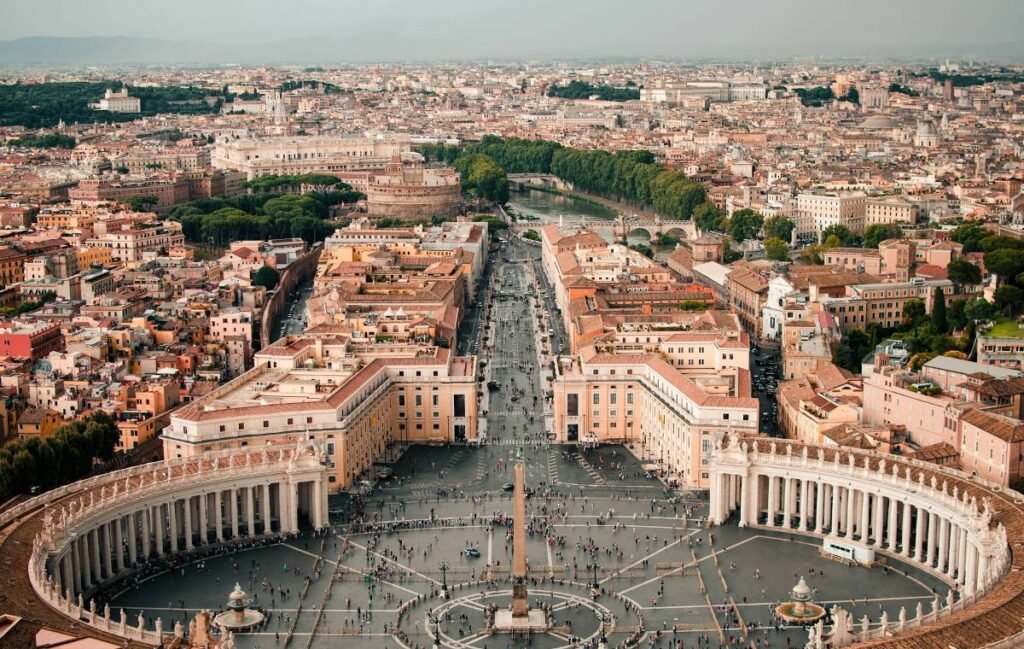
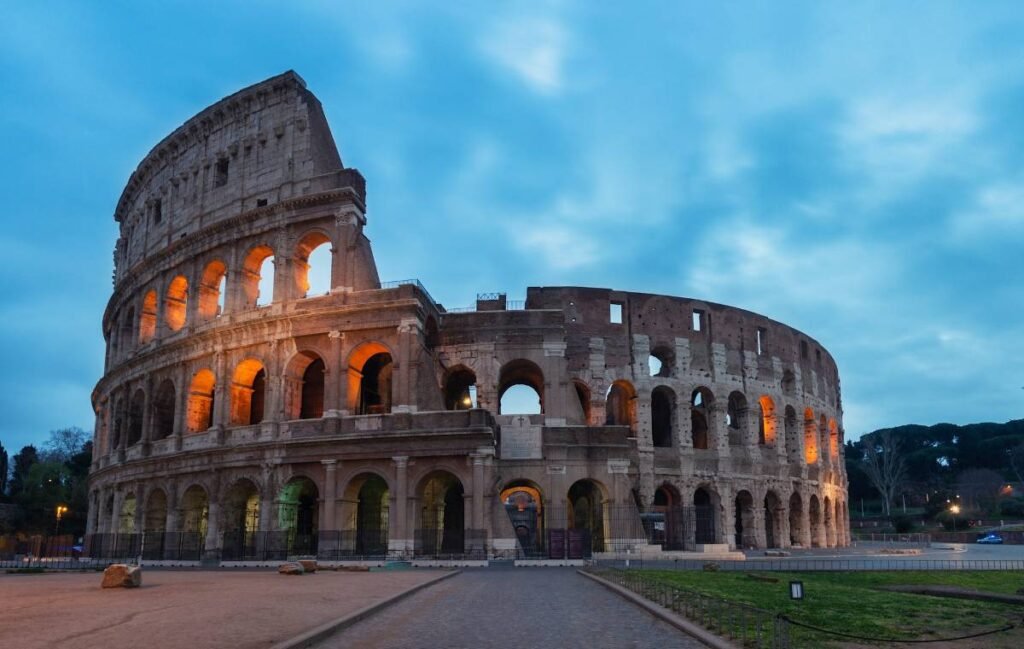
Top Attractions
Rome is a city with plenty of attractions to go and visit, The Colosseum was completed in the year 80 AD and stands as an iconic symbol of Imperial Rome. It attracts over 5.5 million visitors per year and it’s easy to understand why the building really is a must-see. I remember my first visit to the colosseum and as a bit of a history geek, I practically ran to it in excitement (much to the likely annoyance of my partner). Just imagining what those walls have seen! Of course, Rome is much more than the Colosseum, you can wander through the Roman Forum, where political debates happened in times long gone by. Whatever you do, don’t forget to capture these ancient spots around Rome. The Insta360 is a good camera to look into for something lightweight and durable that can also capture the Colosseum in a 360 view!
Vatican City (Holy See to some) is technically it’s own country/territory but you are still able to visit while in Rome. It’s home to St. Peter’s Basilica and the Sistine Chapel, world renowned attractions that will leave you in awe of their grandeur. Don’t forget to check out the Pantheon and the Trevi Fountain – toss a coin to ensure your return to Rome. For a quieter experience, look up and head to hidden places like the Trastevere neighborhood which is known for its cute streets and local places to eat the delicious food of Italy.
Best Time to Visit
The best time to visit Rome is during the spring (April to June) and fall (September to October). These months offer mild weather and fewer crowds. Summer can be scorching and crowded, while winter is cooler and less busy, ideal for those who prefer a quieter visit to one of the best places for digital nomads Italy. Mild weather for most of the year is certainly the biggest draw to those from colder or wetter countries.
Local Cuisines
Rome’s food scene is a delight for anyone loving Italian eats! The city offers a range of traditional Italian dishes that you must try:
– Carbonara: A creamy pasta dish made with eggs, Pecorino Romano cheese, guanciale (pork cheek), and black pepper.
– Cacio e Pepe: Simple yet flavorful, this pasta dish features Pecorino Romano cheese and black pepper.
– Supplì: Deep-fried rice balls filled with mozzarella, often served as a street snack.
– Roman Pizza: Thin and crispy, Roman pizza is different from its Neapolitan counterpart. Try it with classic toppings like Margherita or go adventurous with local variations.
The best thing about the city as a digital nomad is that even you don’t fancy heading out to a restaurant to eat. There are plenty of food delivery options in Rome, catering to all of your preferences.
Budgeting for Rome
Rome can be enjoyed on various budgets. Accommodation prices range from $50 per night in budget hostels to $300+ in luxury hotels. Admittidely, it’s not the cheapest city in Europe to live, but search around and you will are sure to find a good long term deal if that is your goal. A meal at a mid-tier restaurant will set you back around $20-$40. Public transport is affordable, with a single bus or metro ticket costing about $1.50 depending on the journey. For those nomads who do want to stay long term, we suggest checking out Facebook groups, airbnbs, or even approaching a good hotel with a proposition for long term stay.
2. Milan – Best for Fashion and Culture
For all of you fashionistas out there, Milan is Italy’s style and fashion capital. The city is renowned for its sophisticated fashion scene but also its history, and culture. This busy city offers a good range of experiences which include world-class shopping to historical landmarks.
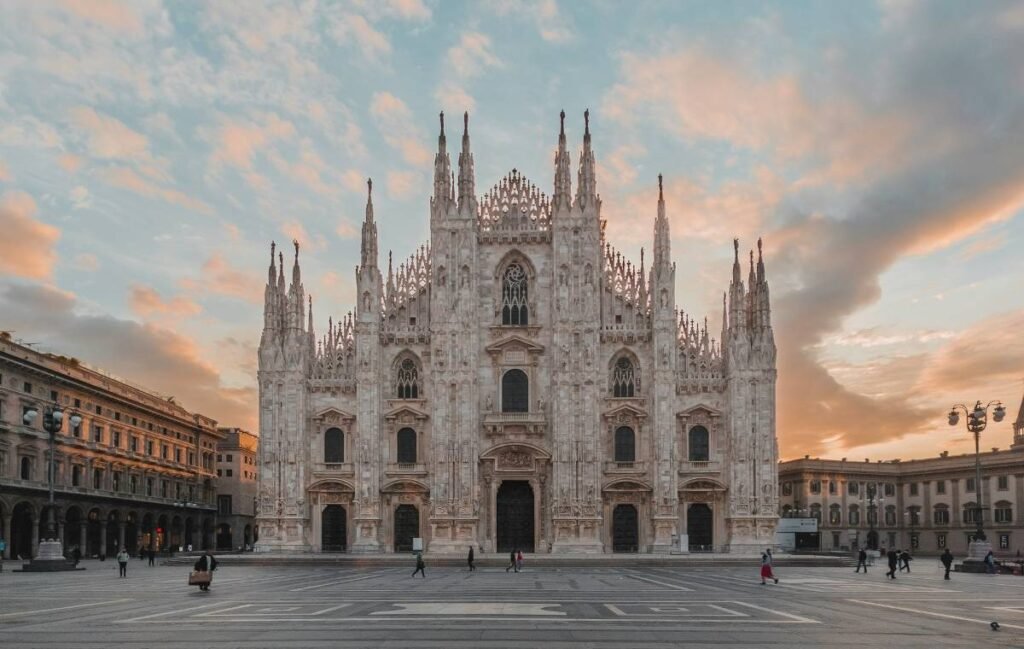

Top Attractions
Milan has plenty of attractions. The iconic Duomo di Milano is a cathedral with intricate Gothic architecture. For art enthusiasts, Leonardo da Vinci’s “The Last Supper” which can be viewed in Santa Maria delle Grazie. Stroll through the four story Galleria Vittorio Emanuele II, Italy’s oldest active shopping gallery (built in 1877), full of luxury boutiques and cafes. If you’re into sports, the San Siro Stadium offers guided tours and a chance to see where AC Milan and Inter Milan play. Lastly, relax at Parco Sempione, a sprawling park perfect for picnics and leisurely walks.
Best Time to Visit
The best time to visit Milan is during spring (April to June) and autumn (September to October) when the weather is pleasant, and the tourist crowds are thinner. Similar to Rome, Summer can be quite hot and humid, while winter is cold but less crowded, offering a different charm.
Local Cuisines
Milan’s culinary scene offers both traditional and modern flavors.
– Risotto alla Milanese: A creamy rice dish flavored with saffron, often served with Ossobuco (braised veal shanks).
– Cotoletta alla Milanese: A breaded veal cutlet, similar to Wiener Schnitzel, typically fried in butter.
– Panettone: A sweet bread loaf with candied fruits, traditionally enjoyed during Christmas.
– Polenta: A hearty cornmeal dish, usually served with meat stews or mushroom sauce.
The one thing I personally love about travel is the food, enjoying all the various dishes of the world is one of the perks of being a digital nomad. The local dishes of Milan certainly never disappoint.
Budgeting for Milan
Milan can be pricey, but it’s possible to manage on a budget. Expect to pay around $80-$150 per night for mid-range accommodation. A meal at a mid-tier restaurant can cost about $30-$50. For more affordable options, consider local trattorias and street food vendors.
Overall Milan is pretty special and with it boasting an amazing fashion scene, gorgeous food, and strong wifi connections, it is easy to see why it is certainly one of the best places for digital nomads Italy If you’re exploring Europe on a budget, check out Digital Nomad Hotspots Hungary for a cheaper alternative with plenty to see and do.
3. Florence – Best for Art Lovers
Florence is another Italian world famous city. It has a really nice old-world charm that’s difficult to say no to. The city’s has a variety of various arts, a long standing history, and food that makes it an irresistible destination for digital nomads.
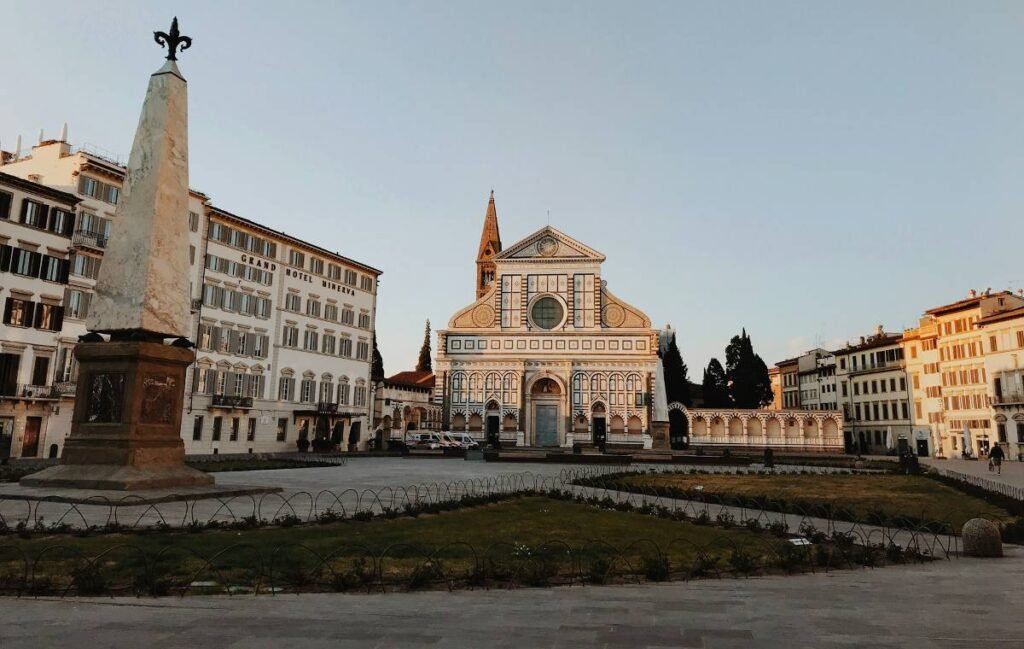
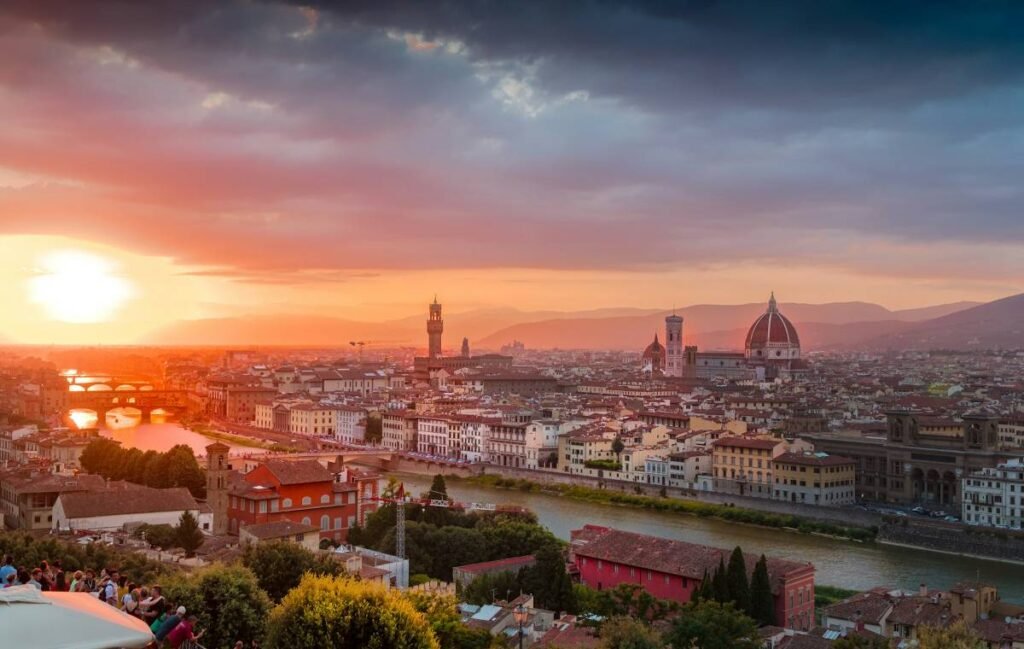
Top Attractions
Florence has plenty of iconic landmarks. The Uffizi Gallery, home to Botticelli’s “The Birth of Venus”, is a must-visit for art lovers. The Duomo has a striking dome which was designed by Brunelleschi and offers panoramic views of the city. While your there, you can also check out the Ponte Vecchio – This is a medieval stone bridge lined with jewelry shops. History fans will appreciate the Palazzo Vecchio, Florence’s town hall, in history and art. For an escape, the Boboli Gardens provides the perfect respite from the city’s everyday life.
Best Time to Visit
Spring (April to June) and fall (September to October) are ideal for visiting Florence. During these months, the weather is pleasant, and tourist crowds are thinner. Summer can be hot and crowded, while winter is quieter but cooler.
Local Cuisines
Florence’s food scene is known for its simplicity and flavor. It dominates the local menus. Here are a few must-try dishes:
– Bistecca alla Fiorentina: This is a massive T-bone steak, usually weighing around 1-2 kilograms, grilled to perfection and served rare.
– Ribollita: A hearty soup made with bread, beans, and vegetables, perfect for a cozy meal.
– Pappardelle al Cinghiale: Wide pasta noodles served with a wild boar sauce.
– Lampredotto: A traditional street food, this sandwich is made from the fourth stomach of a cow, slow-cooked and served with green sauce on a crusty roll.
Budgeting for Florence
Florence can be surprisingly affordable if you plan wisely. Accommodation ranges from $40 for budget options to $200 for mid-tier hotels per night. A meal at a mid-tier restaurant will cost around $25-$40. Florence offers a mix of experiences suitable for various budgets, making it a great option for those looking for affordable living in Italy.
4. Bologna – Best for Italian Gastronomy
Bologna is another option when looking for the best places for digital nomads Italy. It’s a lively city located in the Emilia-Romagna region and renowned for its heritage in food, architecture, and student population.
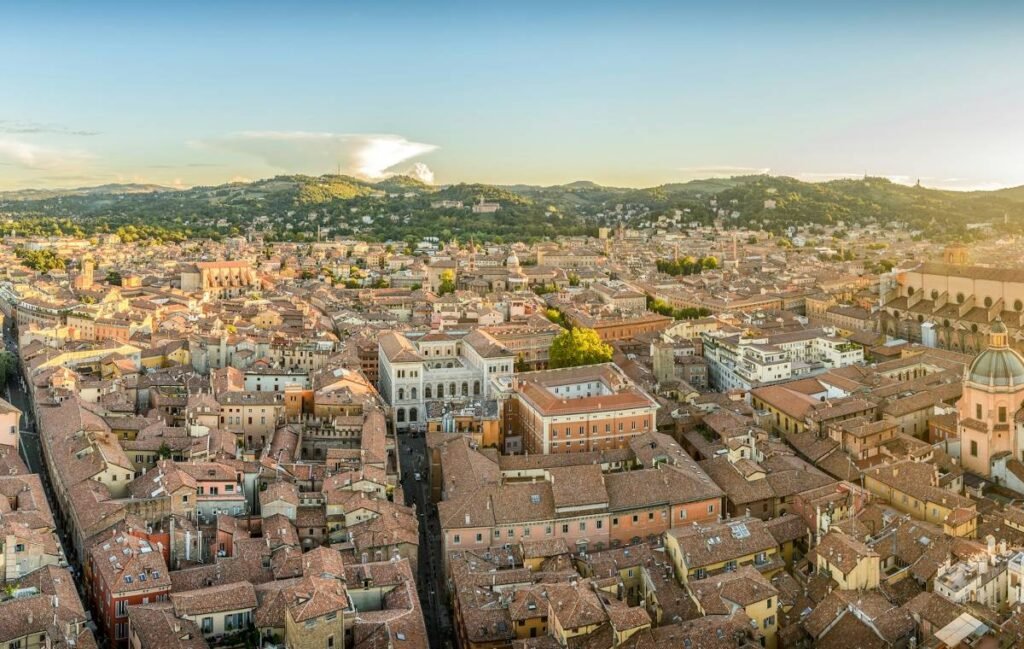
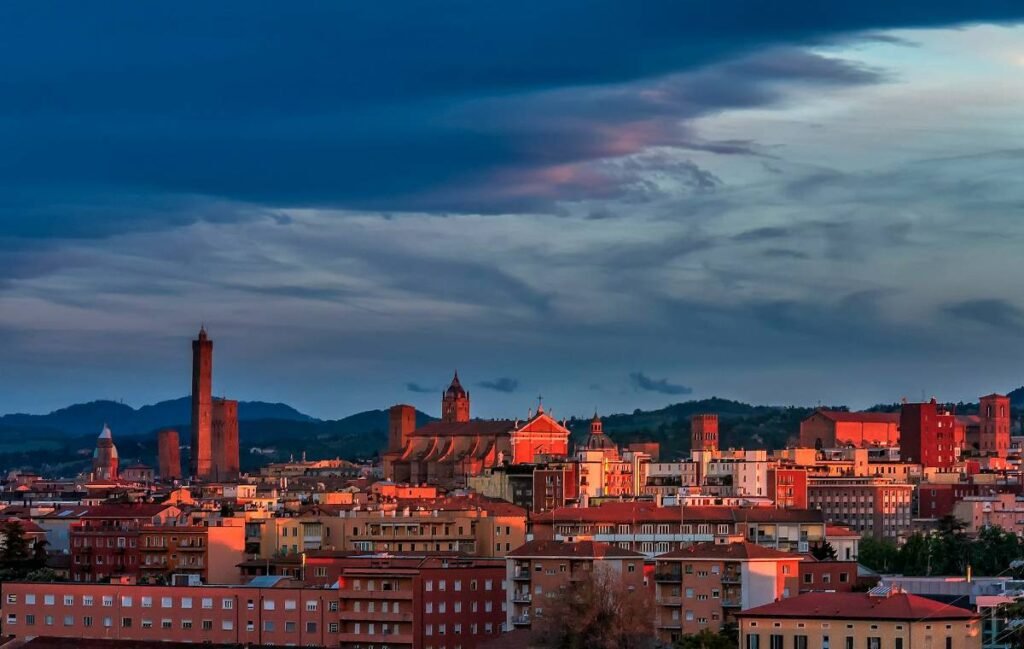
Top Attractions
Bologna offers a variety of attractions that cater to different interests. The Two Towers, Asinelli and Garisenda, are iconic landmarks that offer panoramic views of the city. Piazza Maggiore, the city’s main square, is surrounded by historic buildings like the Basilica di San Petronio and the Palazzo dei Notai. The Archiginnasio used to be the main building of the University of Bologna. Inside it houses the Teatro Anatomico which is a carved anatomical theater. If you’re an Art enthusiast then you should consider visiting the Pinacoteca Nazionale di Bologna, which showcases works from the 13th to the 18th centuries. For a taste of local life, stroll through the Quadrilatero district, a maze of narrow streets filled with markets, shops, and eateries.
Best Time to Visit
The ideal time to visit Bologna is during the spring (April to June) and autumn (September to October). These months offer milder weather and fewer tourists. Summer can be quite hot, while winter sees fewer crowds but can be chilly.
Local Cuisines
Bologna is a food lover’s paradise with a long standing culinary tradition. Some must-try dishes include:
– Tagliatelle al Ragù: Long, flat pasta served with a meat sauce, known elsewhere as Bolognese sauce.
– Tortellini in Brodo: Small, ring-shaped pasta stuffed with meat, served in a flavorful broth.
– Mortadella: A large Italian sausage or cold cut made of finely hashed or ground, heat-cured pork sausage.
– Lasagne alla Bolognese: Layers of flat pasta with ragù, béchamel sauce, and Parmigiano-Reggiano cheese.
The local dishes of Bologna are world famous and can are far reaching. Lasagne for example, can be found in a good amount of countries outside of Italy, but results can also vary. Bologna is where it’s at!
Budgeting for Bologna
Bologna is relatively affordable compared to other Italian cities. Expect to spend around $70-$150 per night for mid-range accommodation. Less for hostel living, or lower end hotels/bnbs. Dining at a mid-tier restaurant will cost approximately $20-$40 per person. For more affordable options, street food and local trattorias offer delicious meals at lower prices.
For more inspiration on nomadic destinations in Europe with a similar climate to Italy, then the Top Greece nomad spots could be well worth looking into.
5. Naples – Best for Being by the Sea
Naples is a city of contrasts with a stunning coastline. It’s a place where the streets are alive with modern living amidst old history, making it an exciting destination for digital nomads who like to live by the sea.
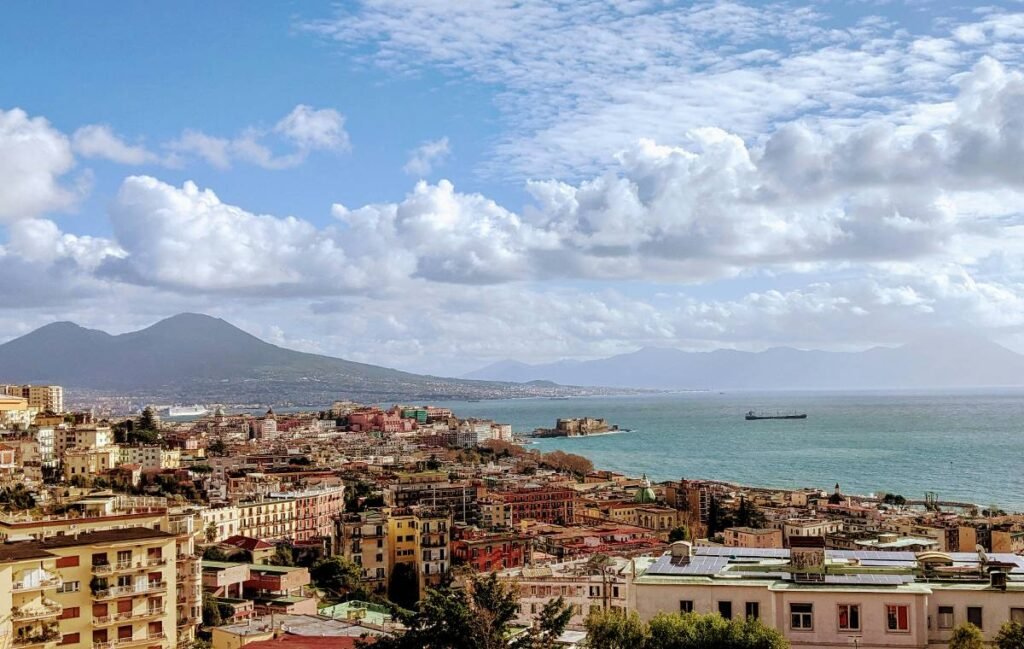

Top Attractions
Naples is has a fantastic amount of attractions to see when you’re not working. Start with the historic center, this is a UNESCO World Heritage site where you can wander through thin alleyways and check out churches like the Naples Cathedral which was founded by Charles II of Naples. The National Archaeological Museum houses an impressive collection of Roman artifacts, including artifacts and recovered peices from Pompeii and Herculaneum. For those of you who are into art, the Capodimonte Museum offers a splendid range of works from renowned artists such as Caravaggio. You can then stroll along the Lungomare which is the city’s seafront promenade. This provides stunning views of the Bay of Naples and Mount Vesuvius. If you’re looking for a unique experience, the undergrounf Catacombs of San Gennaro offer a glimpse into the city’s early Christian history.
Best Time to Visit
The best time to visit Naples is during the spring (April to June) and fall (September to October) when the weather is mild and the tourist crowds are thinner. Summer can be hot and crowded, but it’s also when the city is most lively with festivals and events.
Local Cuisines
Naples is the birthplace of pizza, and you simply cannot leave without trying a classic Margherita. The local cuisine is hearty and flavorful, featuring fresh ingredients and traditional recipes. Key dishes include:
– Pizza Margherita: Made with San Marzano tomatoes, mozzarella cheese, fresh basil, salt, and extra-virgin olive oil.
– Spaghetti alle Vongole: A delightful pasta dish with clams, garlic, white wine, and parsley.
– Sfogliatella: A shell-shaped pastry filled with sweet ricotta, candied fruit, and semolina.
– Ragù alla Napoletana: A meat sauce cooked slowly with tomatoes, onions, and red wine, typically served with pasta.
Budgeting for Naples
Naples is relatively affordable compared to other Italian cities. Accommodation ranges from $50 per night for budget options to $150 for mid-tier hotels. A meal at a mid-tier restaurant will cost you around $15-$25.
Packing Guides and Tips
Before setting off to Italy as a digital nomad, you need to be well-prepared. First, ensure you have all the necessary tech gear. A reliable laptop, an external hard drive for backups, and travel adapters are essential. The plug type in Italy is mainly Type L plugs, so having a universal adapter with you is a smart move. Don’t forget a portable Wi-Fi hotspot. Italy does boast good internet connectivity across large parts but having your own Wi-Fi device ensures you stay connected even in remote areas like the Tuscan countryside. Be sure to get a good sim card upon arrival as you can always resort to your phones mobile hotspot in desperate times. Something that shouldn’t be overlooked is travel Insurance, making sure you are covered is vital. Safetywing is a company that offers great coverage with great coverage for digital nomads.
Clothing choices should be versatile. Italians have a knack for style, and mixiing in can help you feel more at home. Pack lightweight, breathable clothing for the summer, and layers for cooler months. A good pair of walking shoes is a must, especially if you’ll be exploring cities like Florence and Rome. These cities have cobblestone streets that can be tough on your feet. A reusable water bottle is another essential to pack. Tap water in Italy is generally safe to drink, which is a great way to stay hydrated and eco-friendly.
Finally, consider the local culture. Having a few phrases in Italian can go a long way in making connections. Bring a compact Italian phrasebook or download a language app to your phone. This can ease communication and show respect for the local culture.
Best Places for Digital Nomads in Italy Final Thoughts
Choosing the right destination in Italy for your digital nomad lifestyle can make all the difference. Milan stands as a good choice with its strong business environment and connectivity, making it ideal for networking and productivity but can be expensive. Florence offers a mix of art, history, and a more laid-back vibe, perfect for those looking to balance work and culture. Bologna and its student population along with an excellent food scene, provides a lively yet affordable option.
No matter which city you choose, Italy has plenty to offer with modern amenities to support your digital nomad journey. There are just so many things to see and do and the entire country has a long standing history. Just make sure to explore these cities and find the one that resonates with your personal and professional needs. Happy travels!
Other Work Remotely in Europe
Italy’s Top 5 Digital Nomad Locations FAQ
Milan, Florence, Bologna, Naples, and Rome are all popular choices for digital nomads in Italy. Each city offers a unique mix of culture, history, and modern amenities that cater to remote workers.
Absolutely! Italy provides a cultural experience, excellent food, and a variety of workspaces. Cities like Milan and Florence have a robust infrastructure that supports remote work, making it an ideal destination for digital nomads.
Internet speeds in Italy vary by location, but major cities like Milan and Bologna typically offer high-speed internet. Co-working spaces often provide reliable and fast connections, ensuring you stay productive.
Yes, there are digital nomad communities in cities such as Milan and Florence. These communities offer networking opportunities, meet-ups, and events that can help you connect with like-minded individuals.
Italy offers a unique style offering a great array of history, culture, and modern amenities that many digital nomads find appealing. While it may not be as famous as some of the Digital Nomad Hotspots in France, Italy’s diverse cities and lifestyle make it a strong contender for remote workers.


